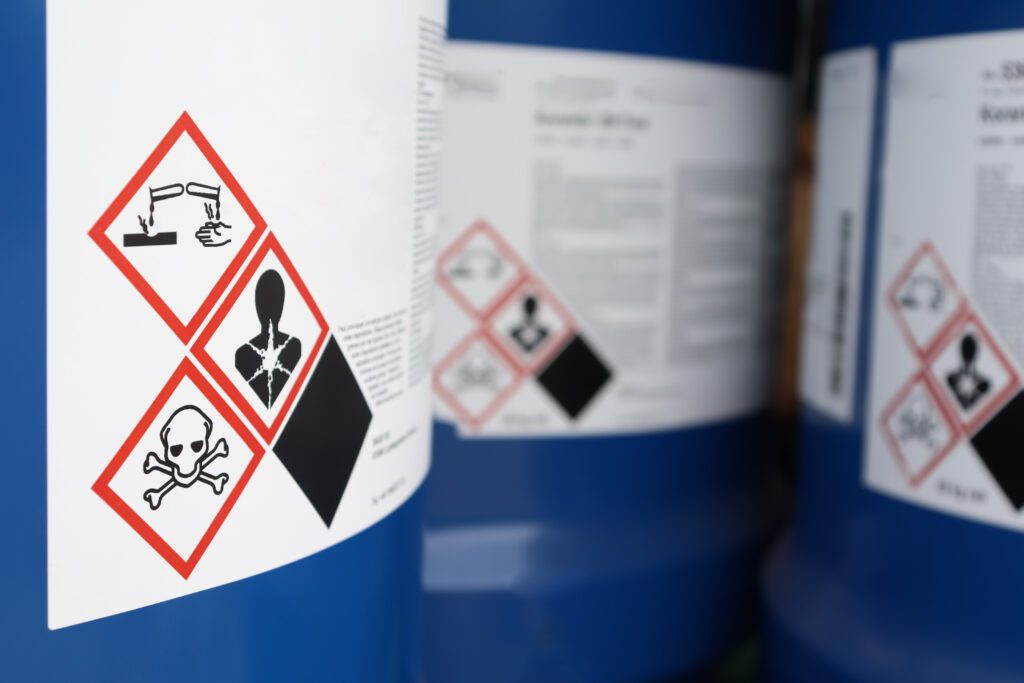As of January 1, 2024, industrial use only mixtures face a new compliance requirement in the European Union (EU). These mixtures will now need to comply with stricter labeling requirements under the CLP (classification, labeling, and packaging) Regulation.
If you manufacture industrial use only mixtures, here’s what you need to know about these changes so you can keep your labels in compliance.
Understanding Industrial Use Only Mixtures
Before diving into the requirements, you need to understand the difference between industrial use only mixtures and industrial use mixtures.
Industrial use only mixtures are exclusively intended for professional use within controlled industrial settings. They are not sold to the general public and are typically kept away from consumer reach. Examples of these are automotive paints used only at industrial sites or high-temperature resistant sealants used in aircraft construction.
On the other hand, industrial use mixtures, while primarily employed in industrial settings, can also be used by other professionals or even consumers.
Key Changes for Industrial Use Only Mixtures Labeling
Prior to January 1, 2024, industrial use only mixtures were exempt from certain labeling obligations under the CLP Regulation. However, these mixtures are now under the full scope of the regulation.
Here are several key changes for industrial use only mixture labeling.
Hazard Pictograms
All industrial use only mixtures must now be classified for their hazards and assigned the corresponding hazard pictograms. These pictograms visually communicate the potential dangers associated with the mixture, such as flammability, toxicity, or corrosivity.
Supplemental Information
Labels must include specific hazard and precautionary statements that elaborate on the pictograms and provide further guidance on the safe handling and storage of the mixture.
Harmonized Labeling
The CLP Regulation promotes the harmonization of hazard information across the EU. This means that industrial use only mixture labels will need to meet these harmonization requirements, regardless of the manufacturer’s location.
The information required on these harmonized labels include the full chemical composition, the toxicological information, information about the product, and the unique formula identifier (UFI).
Key Deadlines for Industrial Use Only Mixtures
While the labeling change for industrial use only mixtures went into effect on January 1, 2024, there is a transitional period in effect until January 1, 2025.
If your mixture is already on the market and has been notified via the national submission system prior to January 1, 2024, you will have until January 1, 2025 to meet the new standards. However, if any changes are made to your mixture before 2025, they will need a new notification and will need to meet the new standards.
All mixtures submitted on January 1, 2024 and after must meet the new requirements.
Preparing for Compliance
Manufacturers of industrial use only mixtures will need to take proactive steps to ensure compliance. Here are some essential actions:
- Classify your industrial use only mixtures — Conduct a thorough hazard assessment of your industrial use only mixtures to determine their classification under the CLP Regulation.
- Update your labeling — Redesign your industrial use only mixture labels to incorporate the necessary hazard pictograms and supplemental information.
- Communicate with customers — Inform your customers about the upcoming labeling changes and provide them with the necessary safety information.
Get Compliance Support
While industrial use only mixtures have been exempt from these labeling requirements in the past, 2024 marks a big change. While some manufacturers may be used to meeting these requirements for industrial use mixtures, they may be new to other manufacturers.
If you need help understanding how to meet these new labeling requirements, contact Tetra Tech’s experts at [email protected]. Tetra Tech can help you understand how the requirements apply to your products, how to classify your mixtures, and how to update your labeling so your products can remain on the EU market.






